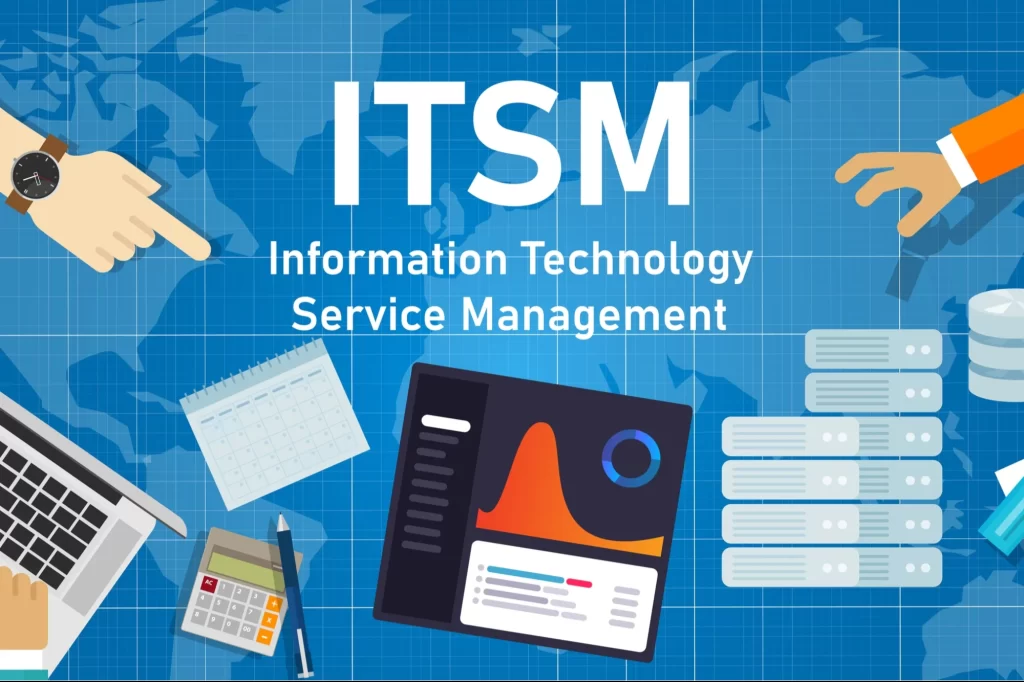
In the modern world coupled with an advanced IT arena, business organizations have leaned on the IT services to be the central force behind their functioning. ITSM for IT services is important for the delivery of excellent services that will meet the customer’s satisfaction and as well the business outcomes. In this working article, you will learn what is ITSM, features of ITSM best practices, the advantages of ITSM, and how to implement it in your business.
What is IT Service Management (ITSM)?
ITSM Best Practices
-
Service Catalogue: Create a comprehensive service catalogue to define and communicate IT services.
-
Incident Management: Establish efficient incident management processes for timely resolution.
-
Problem Management: Identify and resolve root causes of incidents.
-
Change Management: Implement controlled changes to minimize disruptions.
-
Configuration Management: Maintain accurate configuration information.
-
Release Management: Plan, build, test, and deploy changes efficiently.
-
Service Level Management: Define and manage service level agreements (SLAs).
-
Capacity Management: Ensure sufficient IT resources.
-
Availability Management: Ensure high IT service availability.
-
Continuity Management: Develop business continuity plans.
Benefits of ITSM
By adopting ITSM, organizations can significantly boost efficiency, slash downtime, and dramatically improve customer satisfaction. Additionally, ITSM helps streamline operations, reduce costs, and align IT services with business goals, leading to increased productivity and competitiveness.
-
Improved customer satisfaction
-
Increased efficiency and productivity
-
Enhanced IT service quality
-
Reduced downtime and costs
-
Better alignment with business objectives
-
Improved risk management
-
Increased transparency and communication
-
Scalability and flexibility
-
Compliance with regulatory requirements
-
Competitive advantage
Implementation Strategies
“To successfully implement ITSM, start by assessing your current processes and gaps, then define a customized framework and governance structure. Next, equip your team with training and intuitive tools, and foster a culture of continuous improvement through regular evaluation and refinement.
-
Assess Current Processes: Evaluate existing ITSM processes.
-
Define ITSM Framework: Choose a framework (e.g., ITIL, ISO/IEC 20000).
-
Establish Governance: Define roles, responsibilities, and policies.
-
Implement Tools: Select ITSM software (e.g., ServiceNow, JIRA).
-
Train Staff: Provide ITSM training and certification.
-
Monitor and Evaluate: Continuously assess and improve ITSM processes.
Common ITSM Frameworks
Popular ITSM frameworks like ITIL, ISO/IEC 20000, and COBIT provide proven blueprints for delivering top-notch IT services. Other notable frameworks, such as Microsoft’s MOF and DevOps, offer complementary approaches to streamline operations, boost efficiency, and drive business agility.
-
ITIL (Information Technology Infrastructure Library)
-
ISO/IEC 20000
-
COBIT (Control Objectives for Information and Related Technology)
-
MOF (Microsoft Operations Framework)
Challenges and Opportunities
ITSM adoption comes with its share of challenges, from changing mindsets to integrating systems. However, the benefits far outweigh the hurdles, enabling organizations to deliver exceptional customer experiences, streamline operations, and fuel business growth and innovation
-
Cultural Change: ITSM requires cultural shifts.
-
Resource Allocation: Ensure sufficient resources.
-
Integration: Integrate ITSM with existing processes.
-
Continuous Improvement: Regularly assess and improve ITSM.
Conclusion
FAQs
-
What is ITSM?
-
What are ITSM best practices?
-
What are the benefits of ITSM?
-
How do I implement ITSM?
-
What are common ITSM frameworks?
Read our latest blog
Software Development Methodologies: Agile, Waterfall
